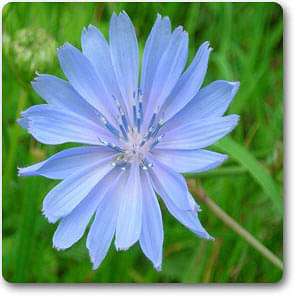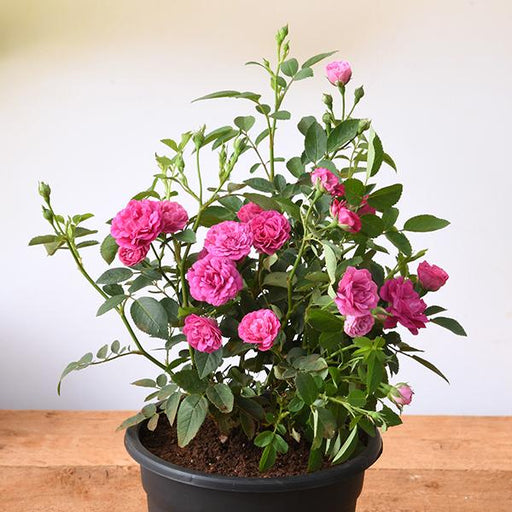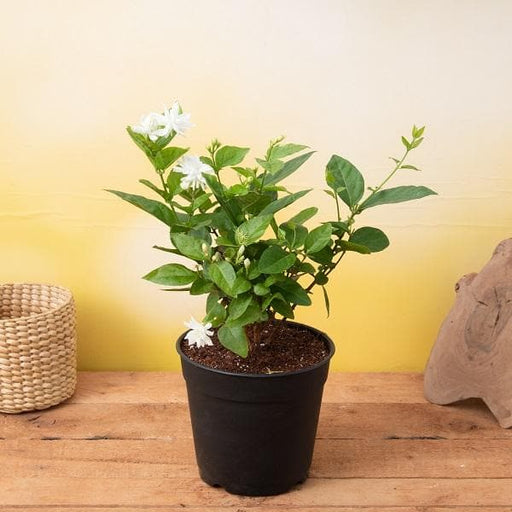
Chichorium intybus - Plant
(MRP Inclusive of all taxes)
- Shipping ₹79 for entire order
- Dispatch in 7 days
- Country of origin: India

(MRP Inclusive of all taxes)
 Save 29%
Save 29%
Air Purifier Money Plant with Pot The Air Purifier Money Plant, also known as Pothos or Epipremnum aureum, is a stunning indoor plant that...
View full details
 Save up to 15%
Save up to 15%
Peace Lily, Spathiphyllum - Plant The Peace Lily, scientifically known as Spathiphyllum, is a stunning houseplant celebrated for its elegant white...
View full details
 Save 25%
Save 25%
Jasminum sambac, Mogra, Arabian Jasmine - Plant Jasminum sambac, commonly known as Mogra or Arabian Jasmine, is a fragrant flowering plant...
View full details
 Save 18%
Save 18%
Combo Constituents Includes the Parijat Tree (Night-Flowering Jasmine), a culturally significant plant with fragrant flowers. Description The Pari...
View full details
 Save 25%
Save 25%
Miniature Rose, Button Rose (Any Color) - Plant The Miniature Rose, also known as the Button Rose, is a charming and compact flowering plant that ...
View full details Save 25%
Save 25%
Damascus Rose, Scented Rose (Any Color) - Plant The Damascus Rose, also known as Rosa damascena, is a timeless symbol of beauty and romanc...
View full details
 Save 17%
Save 17%
Beautiful Fragrant Mogra, Arabian Jasmine Plant with Pot The Beautiful Fragrant Mogra, also known as Arabian Jasmine (Jasminum sambac), is...
View full details Save 15%
Save 15%
Pack of Vermicompost and Neem Cake for House Plants Transform your indoor garden with our premium Pack of Vermicompost and Neem Cake, spec...
View full details
Pack of Plant Growth and Flower Boosters Unlock the full potential of your garden with our Pack of Plant Growth and Flower Boosters! This ...
View full details Save 38%
Save 38%
Combo of Jeevamrut and Neem Raksha for Easy Growth and Protection of Houseplants Transform your indoor garden with our exclusive combo of ...
View full details Save 22%
Save 22%
Plant Nutrients Kit (Pack of 16) for a Healthy Garden Transform your garden into a lush paradise with our Plant Nutrients Kit, featuring 1...
View full details Save 16%
Save 16%
Combo of Top Plant Fertilizers Elevate your gardening game with our exclusive Combo of Top Plant Fertilizers, featuring two bags of premiu...
View full details Save 24%
Save 24%
Pack of 4 Additives to Make Soil Healthy and Nutrient Rich Transform your garden into a thriving ecosystem with our Pack of 4 Additives de...
View full details Save 30%
Save 30%
Transform your gardening experience with our premium Combo of Perlite and Vermiculite. This unique blend is designed to enhance soil aeration and ...
View full details Save 27%
Save 27%
Combo of 2 Vermicompost and Cocopeat - Enrich Your Soil Naturally! Transform your garden into a thriving ecosystem with our Combo of 2 Ver...
View full details
 Save 35%
Save 35%
Best 6 Plants for Perfect Indoor Garden Transform your living space into a lush oasis with our curated collection of the Best 6 Plants for a...
View full details
 Save up to 50%
Save up to 50%
Mini Succulent Garden Pack Transform your space with our Mini Succulent Garden Pack, featuring a delightful collection of 4 any variety beautiful s...
View full details
 Save 30%
Save 30%
5 Best Fragrant Plants Transform your garden or indoor space into a fragrant paradise with our curated selection of the 5 Best Fragrant Plants. Th...
View full details
 Save 24%
Save 24%
Set of 2 Bonsai Looking Grafted Adeniums Transform your indoor or outdoor space with our exquisite Set of 2 Bonsai Looking Grafted Adenium...
View full details Save 45%
Save 45%
Top 4 Die Hard Succulents Pack Transform your indoor or outdoor space with our Top 4 Die Hard Succulents Pack, featuring a curated selecti...
View full details
 Save 30%
Save 30%
5 Best Indoor Plants Pack Transform your living space into a lush oasis with our '5 Best Indoor Plants Pack.' This carefully curated collection fe...
View full details
 Save 25%
Save 25%
Set of 4 Evergreen Air Purifier Plant Pack Transform your indoor space into a lush, green oasis with our Set of 4 Evergreen Air Purifier Pla...
View full details| SrNo | Item Name |
|---|---|
| 1 | Chichorium intybus - Plant |
Chichorium intybus, commonly known as chicory, is a perennial herbaceous plant belonging to the Asteraceae family. Renowned for its vibrant blue flowers and deep taproot, chicory is not only a beautiful addition to gardens but also a versatile plant with numerous culinary and medicinal uses. This hardy plant thrives in various soil types and is often found in wild meadows, making it a resilient choice for gardeners and herbalists alike.
What makes chicory special is its rich history and diverse applications. Used since ancient times for its health benefits, chicory has been a staple in traditional medicine and cuisine. Its leaves can be consumed as a salad green, while the roasted roots serve as a caffeine-free coffee substitute, making it a popular choice for those seeking healthier alternatives.
Chicory's special feature lies in its ability to improve soil health. As a deep-rooted plant, it helps break up compacted soil, enhancing aeration and water retention. Additionally, chicory attracts beneficial pollinators, contributing positively to the ecosystem.
Chicory plays a significant role in promoting biodiversity. Its flowers attract various pollinators, including bees and butterflies, which are essential for maintaining healthy ecosystems. Additionally, chicory's deep roots help prevent soil erosion and improve soil structure, making it an excellent choice for sustainable gardening practices.
If you think Chichorium intybus is just a fancy name for chicory, think again! This plant is a powerhouse of health benefits. Packed with antioxidants, it can help improve digestion, support liver health, and even boost your immune system. Plus, it’s a natural diuretic, which means it can help you shed those pesky water pounds. Who knew a plant could be your new best friend in the quest for wellness?
Want to grow your own Chichorium intybus? It’s easier than you think! This resilient plant thrives in well-drained soil and loves a good dose of sunlight. Just remember, it’s not a fan of overly wet feet, so don’t drown it! With a little TLC, you’ll have a chicory garden that would make even the most seasoned gardener green with envy.
Chicory isn’t just a pretty face in the garden; it’s also a culinary superstar! From salads to coffee substitutes, this plant can do it all. The leaves can be tossed into salads for a bitter crunch, while the roots can be roasted and ground to create a coffee alternative that’s surprisingly delicious. Who knew being healthy could taste so good?
Step aside, pharmaceuticals! Chichorium intybus has been used for centuries in traditional medicine. Its anti-inflammatory properties can help soothe various ailments, while its ability to promote bile production makes it a liver’s best friend. So, if you’re looking for a natural remedy, this plant might just be your herbal hero.
Did you know there’s more than one type of Chichorium intybus? From the classic endive to the vibrant radicchio, these varieties offer a spectrum of flavors and textures. Each type brings its own unique flair to the table, making it a versatile addition to your culinary repertoire. So, why settle for one when you can have a whole chicory family?
Who says plants can’t be both functional and fabulous? Chichorium intybus makes for a stunning addition to any landscape. With its striking blue flowers and lush green leaves, it’s a visual treat that also attracts pollinators. Plant it in your garden, and watch as it transforms your outdoor space into a chicory paradise.
If you’re counting calories, you’ll love Chichorium intybus! This low-calorie plant is rich in vitamins A, C, and K, along with essential minerals like potassium and calcium. It’s like a multivitamin in leafy green form! So, go ahead and pile on the chicory; your body will thank you for the nutrient boost.
Ready to reap the rewards of your Chichorium intybus garden? Timing is everything! Harvest the leaves when they’re young and tender for the best flavor. If you’re after the roots, wait until the plant is fully mature. Just remember, a little patience goes a long way in the world of gardening, and your chicory will be worth the wait!
Every garden has its pests, but fear not! Chichorium intybus is known to be relatively pest-resistant. However, if those pesky critters do show up, a little neem oil or insecticidal soap can work wonders. Keep your chicory healthy and thriving, and it will reward you with a bountiful harvest.
Looking to create a harmonious garden? Chichorium intybus plays well with others! It pairs beautifully with plants like beans and carrots, helping to enhance growth and deter pests. So, plant it alongside your favorites, and watch as your garden flourishes in perfect harmony.
Foraging enthusiasts, rejoice! Chichorium intybus is a wild edible that’s often found in fields and along roadsides. Its leaves can be foraged for salads, while the roots can be roasted for a unique treat. Just remember to forage responsibly and leave some for the next adventurous soul!
Chichorium intybus, commonly known as chicory, is a perennial herbaceous plant that’s not just a pretty face. It boasts vibrant blue flowers and a root that’s often roasted and brewed as a coffee substitute. This plant is a culinary superstar and a health enthusiast’s dream, packed with fiber and antioxidants.
Chichorium intybus thrives in temperate regions, strutting its stuff in Europe, North America, and parts of Asia. It loves well-drained soil and plenty of sunshine, making it the diva of the garden. Just plant it in a sunny spot, and watch it flourish like it’s on a botanical runway.
Absolutely! Chicory leaves can be enjoyed raw in salads or cooked like spinach. The roots can be roasted and ground for a caffeine-free coffee alternative. Just remember, chicory is a bit bitter, so it’s like that friend who tells it like it is—refreshing but with a kick!
Growing Chichorium intybus is as easy as pie! Plant seeds in spring or fall in well-drained soil with full sun. Water regularly, but don’t drown it—this isn’t a swimming pool! In a few months, you’ll have a chicory plant that’s ready to impress your friends.
While Chichorium intybus can spread like gossip in a small town, it’s not considered highly invasive. It can self-seed and pop up in unexpected places, so keep an eye on it. A little management goes a long way in keeping this plant from taking over your garden party.
The leaves, flowers, and roots of Chichorium intybus are all fair game! The leaves are great in salads, the flowers add a pop of color, and the roots can be roasted for a delightful coffee substitute. It’s like a buffet of botanical goodness!
You bet! Chichorium intybus has been used in traditional herbal medicine for centuries. It’s believed to support digestion, liver health, and even act as a mild diuretic. Just remember, while it’s a great herbal ally, consult a healthcare professional before diving into the herbal world.
Harvesting Chichorium intybus is like a treasure hunt! For leaves, pick them when they’re young and tender. For roots, wait until fall when they’re plump and ready. Just dig them up, wash off the dirt, and voilà! You’ve got yourself a chicory feast.
While Chichorium intybus isn’t toxic to pets, moderation is key. A nibble here and there won’t hurt, but too much chicory can lead to tummy troubles. So, keep an eye on your furry friends and let them enjoy this plant in small doses.
The best time to plant Chichorium intybus is in early spring or late summer. This plant loves cool weather, so don’t let the heat wave fool you! Plant it when the weather is just right, and it’ll reward you with a bountiful harvest.
Yes, you can! Chichorium intybus is container-friendly, making it perfect for small spaces or patios. Just ensure your pot has good drainage and enough room for those roots to stretch. With a little love, you’ll have a chicory plant that’s the talk of the town!